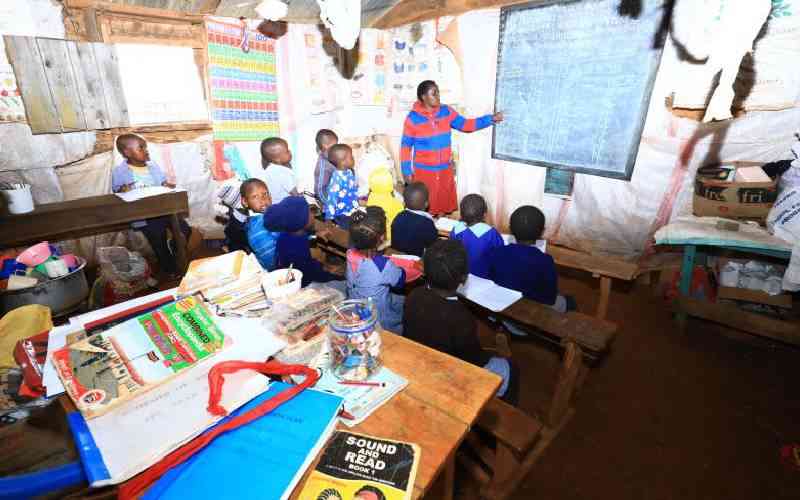By CHARLES NGENO
A high level of illiteracy in the country continues to undermine the government’s development initiatives.
Education, Science and Technology Cabinet Secretary Jacob Kaimenyi said 38.5 per cent of Kenyans lacked the minimum literacy levels required for participation in national development.
Consequently, Prof Kaimenyi said the ministry, through the Kenya Education Sector Support Programme (KESSP) 2005-2010, has embarked on several strategies to improve access and enhance quality in the provision of Adult and Continuing Education (ACE) programmes.
“Seventeen primer readers in various languages have been reviewed, printed and distributed to various learners. Plans are under way to develop primers for learners from other minority language groups,” said Kaimenyi.
Implementation plan
In a speech read on his behalf by acting Director of Adult and Continuing Education Irreneous Kinara during this year’s International Literacy Day celebrations held in Kilgoris, Narok County, Kaimenyi revealed that the ministry was developing an ACE strategic and implementation plan.
“We intend to introduce capitation and development grants to public ACE centres and schools. Adult literacy levels are still low at 61.5 per cent,” he said.
The Cabinet Secretary noted that less than 15 per cent of the country’s youth enter middle and higher level institutions, with over 80 per cent of the rest entering the non-formal sector after school.
“My ministry plans to spend up to Sh5.08 billion between 2013 and 2016 to enable many Kenyans use alternative basic, adult and continuing education as a significant route to access formal education and skills programmes,” said Kaimenyi.
He disclosed that the government in 2010 hired 880 adult education teachers as a way of addressing the teacher shortage for the programme.
He added that the teachers have been undergoing induction to improve their skills in curriculum delivery.
“To ensure professional delivery of adult literacy content, the ministry, through the Kenya Institute of Curriculum Development, has developed a curriculum for training the teachers of ACE programme,” said Kaimenyi.
He said there has been a tremendous improvement in the enrollment for ACE programmes, from 13,198 in 2006 to 292,069 by June 2013.
He said the global approach to literacy has had a major shift from the traditional 3Rs (Reading, Writing and Arithmetic) to include literacies such as interpretation and application, use of computers, innovation and other digital technologies aimed at lifelong learning.
Stay informed. Subscribe to our newsletter
Globally, over 776 million people lack minimum literacy skills while over 75 million children are out of school and many more continue to drop out for various reasons among them poverty.
Unesco’s monitoring report titled Education for All (2008) shows a clear connection between illiteracy and severe poverty.
 The Standard Group Plc is a
multi-media organization with investments in media platforms spanning newspaper
print operations, television, radio broadcasting, digital and online services. The
Standard Group is recognized as a leading multi-media house in Kenya with a key
influence in matters of national and international interest.
The Standard Group Plc is a
multi-media organization with investments in media platforms spanning newspaper
print operations, television, radio broadcasting, digital and online services. The
Standard Group is recognized as a leading multi-media house in Kenya with a key
influence in matters of national and international interest.
 The Standard Group Plc is a
multi-media organization with investments in media platforms spanning newspaper
print operations, television, radio broadcasting, digital and online services. The
Standard Group is recognized as a leading multi-media house in Kenya with a key
influence in matters of national and international interest.
The Standard Group Plc is a
multi-media organization with investments in media platforms spanning newspaper
print operations, television, radio broadcasting, digital and online services. The
Standard Group is recognized as a leading multi-media house in Kenya with a key
influence in matters of national and international interest.









